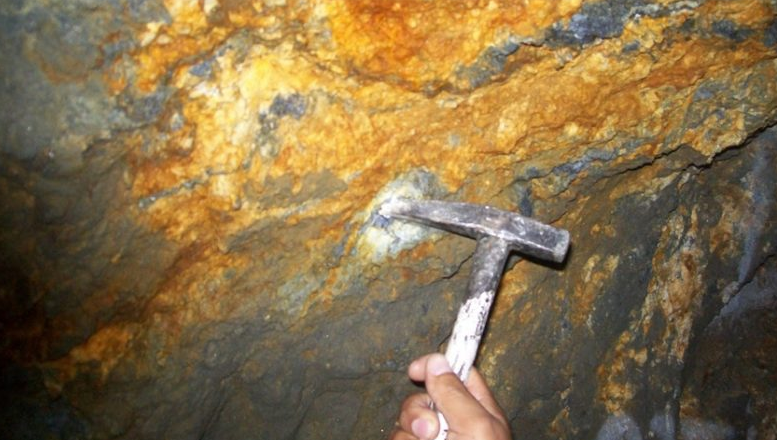An international team of scientists, in which the University of Granada (UGR) has participated, has provided new information on the origin of gold, one of the puzzles that has intrigued humanity since time immemorial does not have an explanation that convinces the scientific community.
His work, recently published by the journal Nature Communications, has determined that gold traveled to the surface of the Earth from the deepest parts of the planet. In this way, it would have been the game of internal movements of the Earth that would have favored the ascent and concentration of the precious metal.
Researchers have found evidence of this process in Patagonia Argentina, which is also the first gold record found under the South American continent, 70 kilometers deep.
The interior of the Earth is divided into three great layers: bark, mantle and core. “In the crust, we find the minerals we extract and sustain our economy. And while we are experts exploiting them, we still know little about their true origin. The search for gold has motivated migrations, expeditions and even wars, but their origin is one of the main questions in the field of the genesis of mineral deposits, “says José María González Jiménez, researcher Ramón y Cajal of the Department of Mineralogy and Petrology of the UGR.
The mantle is the layer of the planet that separates the core of the crust where we live, and this limit occurs at a depth of 17 kilometers under the oceans and 70 kilometers under the continents. “This is a distance still inaccessible for man, since we do not have the ability to get directly to the mantle to know him better,” says the UGR researcher.
However, the mantle can reach our hands thanks to volcanic eruptions that drag small fragments or xenoliths from the mantle under the continents to the surface. It is these unusual xenoliths that have been investigated in this study, and scientists have found small particles of native gold, the thickness of a hair, whose origin is the deep mantle.
Study in the largest gold regions of the world
The study has focused on the area of the Deseado Massif in Patagonia Argentina, one of the largest gold regions known on the planet, whose gold mines are still in operation.
This zone of the crust has a very high concentration of gold that has allowed to decipher why the mineral deposits are restricted to certain specific zones of the planet. The hypothesis of the research team is that the mantle under that province has a singularity, a predisposition to generate surface gold deposits, due to its history.
“This story dates back to about 200 million years ago, when South America and Africa formed a single continent,” says González Jiménez. “Its separation, among other factors, was due to an ascent of the deep mantle or” mantle pen “, which broke the much more fragile and thin crust, generating the separation of the continents. The rise of this deep mantle plume generated a true chemical factory that enriched the mantle with metals, generating the conditions so that later, in a new movement, this time from one tectonic layer under another, this enriched zone is the reservoir generating plant of gold, thanks to the circulation of metal-rich fluids through fractures, which precipitate and concentrate the metals near the earth’s surface. ”
The discovery of this scientific equipment throws new clues on the formation of mineral deposits that are generally attributed to an origin in the same crust, without considering the role of a deeper root from the mantle.
This new scientific evidence could contribute to a more sophisticated exploration of deposits that considers not only superficial images or “x-rays” of the crust for its search, but also to investigate in the depths of the mantle, to where could be traced the origin of the existence of one of the metals that has most dazzled our species.
Source: http://bit.ly/2z1HD7R











